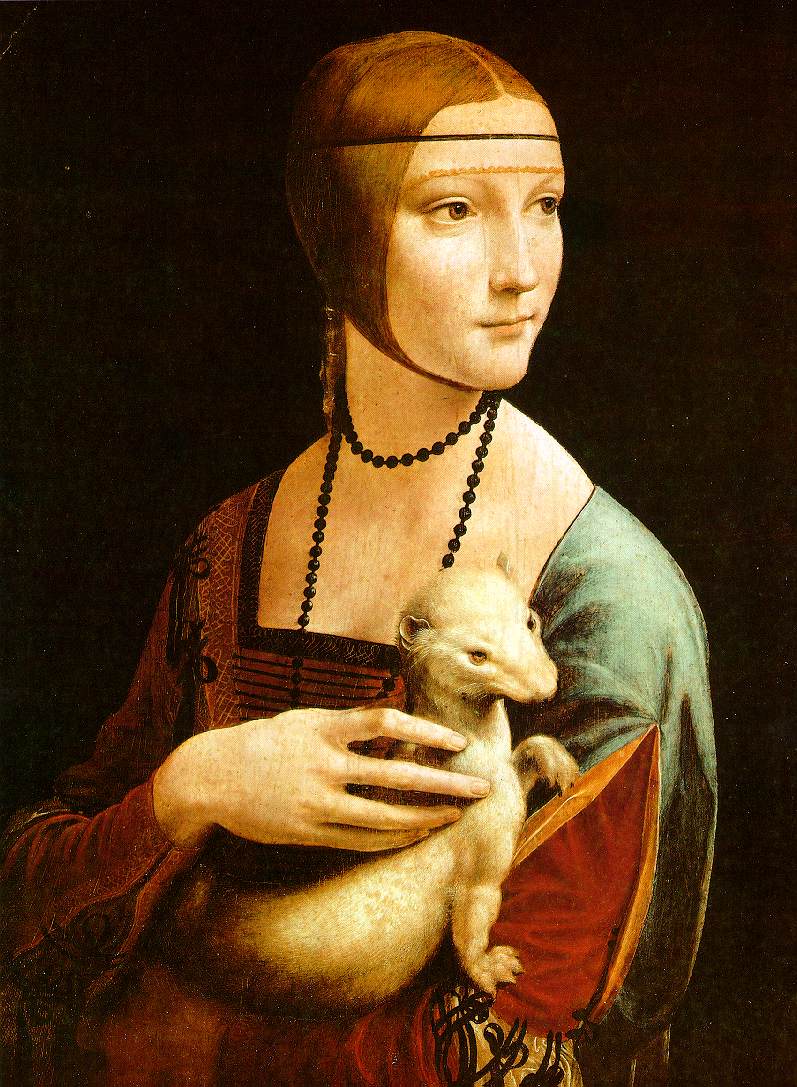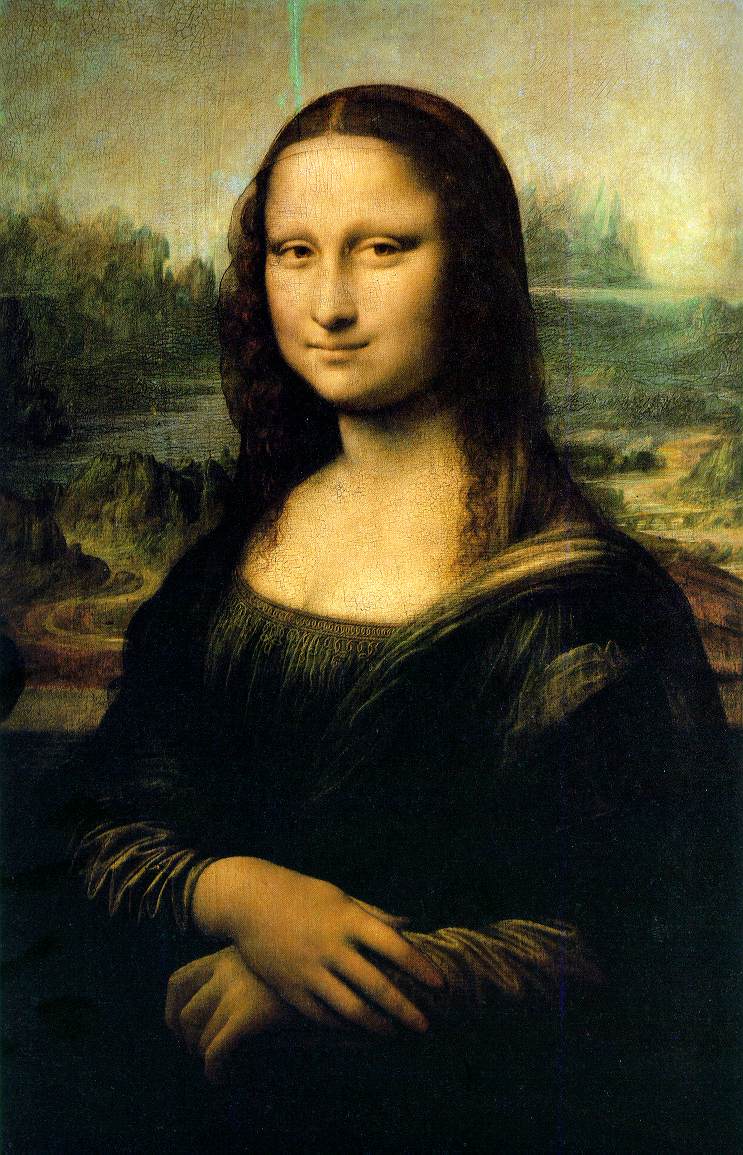
Leonardo da Vinci
(1452-1519)
There has never been an artist who was more fittingly, and without
qualification, described as a genius. Like Shakespeare, Leonardo came from an
insignificant background and rose to universal acclaim. Leonardo was the
illegitimate son of a local lawyer in the small town of Vinci in the Tuscan
region. His father acknowledged him and paid for his training, but we may wonder
whether the strangely self-sufficient tone of Leonardo's mind was not perhaps
affected by his early ambiguity of status. The definitive polymath, he had
almost too many gifts, including superlative male beauty, a splendid singing
voice, magnificent physique, mathematical excellence, scientific daring ... the
list is endless. This overabundance of talents caused him to treat his artistry
lightly, seldom finishing a picture, and sometimes making rash technical
experiments. The Last Supper, in the church of Santa Maria delle Grazie in
Milan, for example, has almost vanished, so inadequate were his innovations in
fresco preparation.
Mona Lisa
1503-1506
Oil on wood
77 x 53 cm (30 x 20 7/8 in.)
Louvre, Paris

Self-Portrait
c. 1512
Red chalk
33.3 x 21.3 cm (13 1/8 x 8 3/8 in)
Biblioteca Reale, Turin
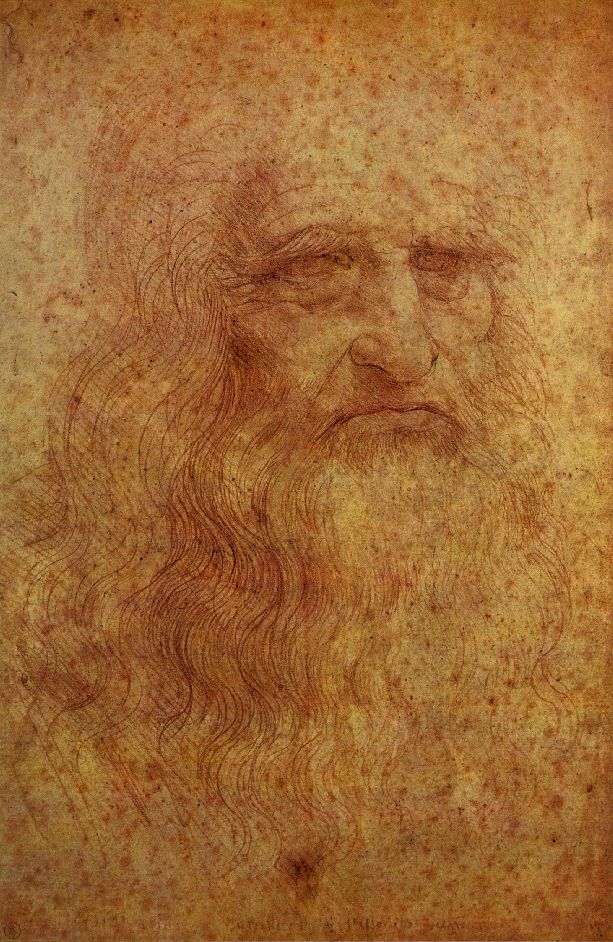
Muscles of the neck and shoulders
c. 1515
Pen and ink, black chalk, wash
29.2 cm (11 1/2 in) high
Anatomical Studies, fol. 137v
Windsor Castle, the Royal Library
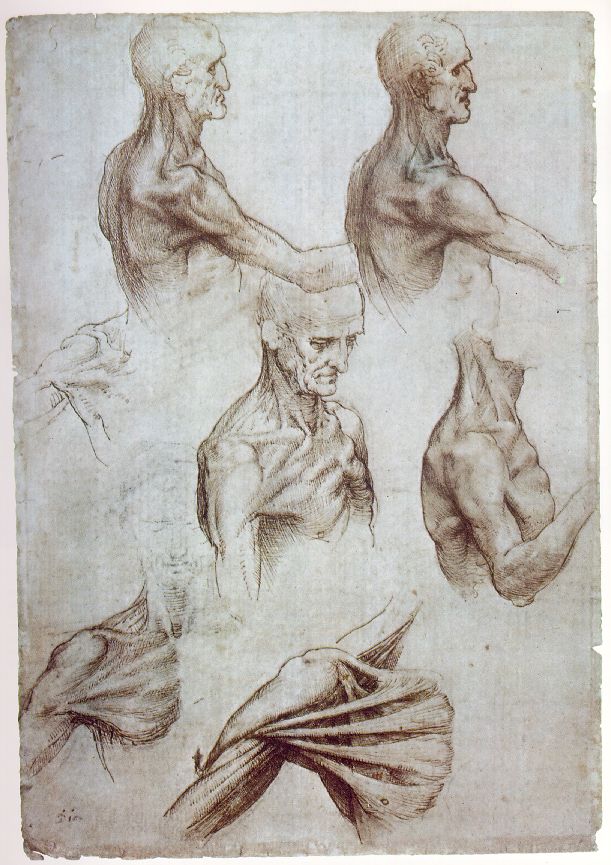
Distance from the Sun to the Earth and the size of the Moon
Cod. Leicester, fol. 1v
Royal Library, Windsor Castle
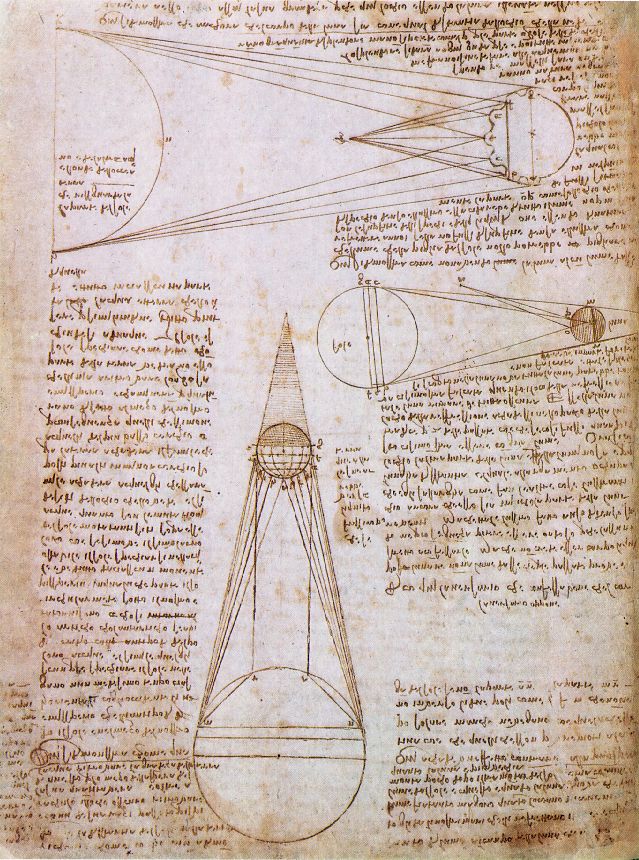
The Last Supper
after cleaning
1498
Tempera on plaster
460 x 880 cm (15 x 29 ft.)
Convent of Santa Maria delle Grazie (Refectory), Milan

Study of proportions
from Vitruvius's De Architectura
Pen and ink
34.3 x 24.5 cm (13 1/2 x 9 5/8 in.)
Accademia, Venice
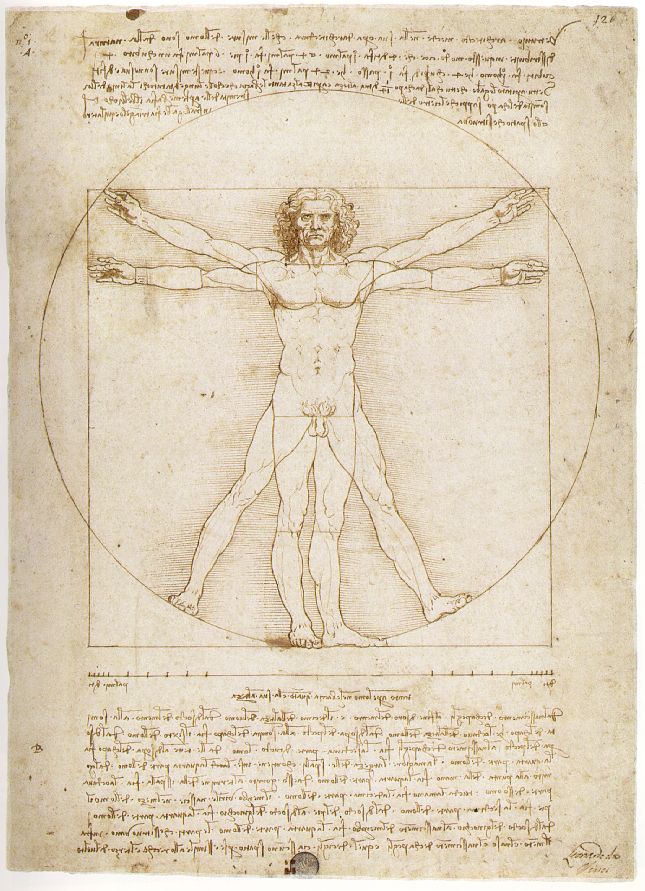
Portrait of Ginevra Benci
Detail of landscape
1474-1476
Oil on wood
42 x 37 cm (16 1/2 x 14 1/2 in.)
National Gallery of Art, Washington
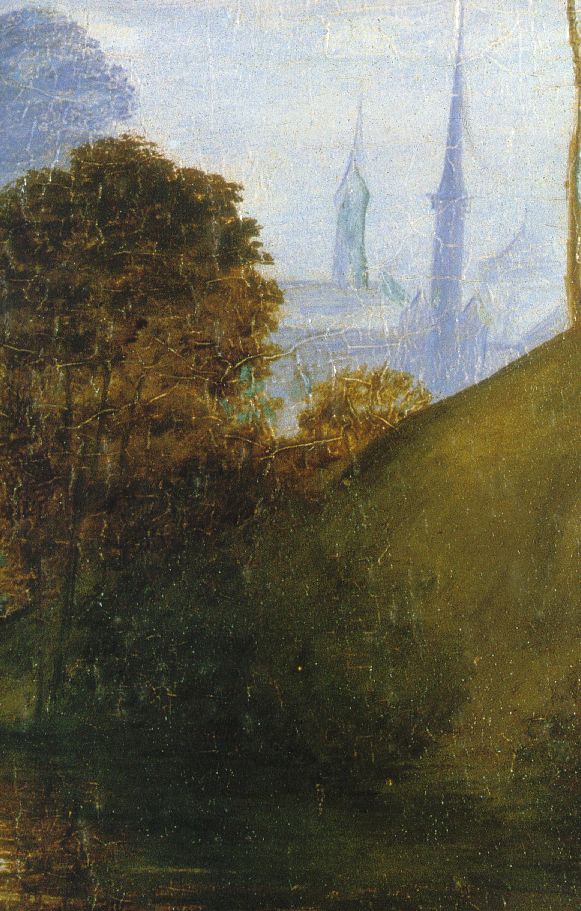
Benois Madonna
c. 1478
Oil on canvas, transferred from panel
19 1/2 x 12 1/2 in (49.5 x 31.5 cm)
Hermitage, St Petersburg
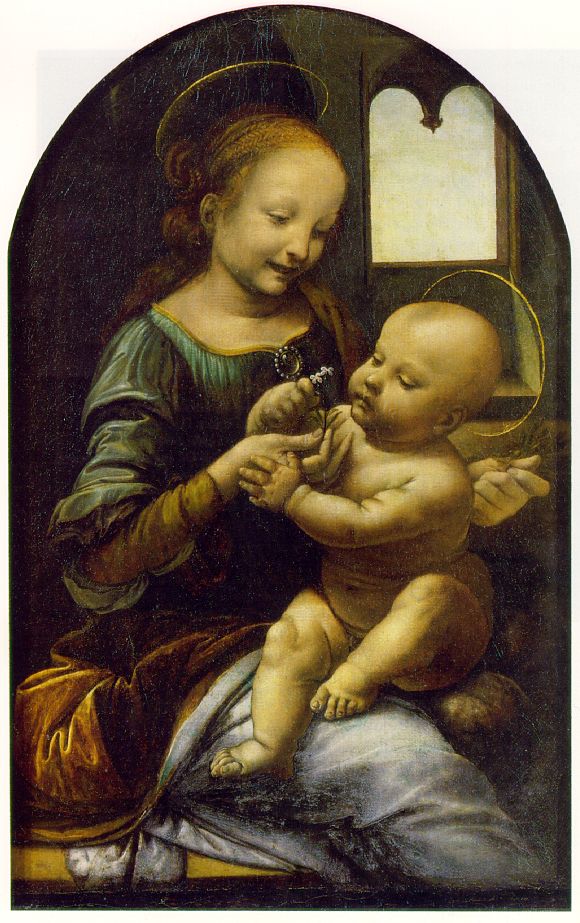
The Virgin of the Rocks
1483-86
Oil on panel
77 5/8 x 47 5/8 in (199 x 122 cm)
Musee du Louvre, Paris
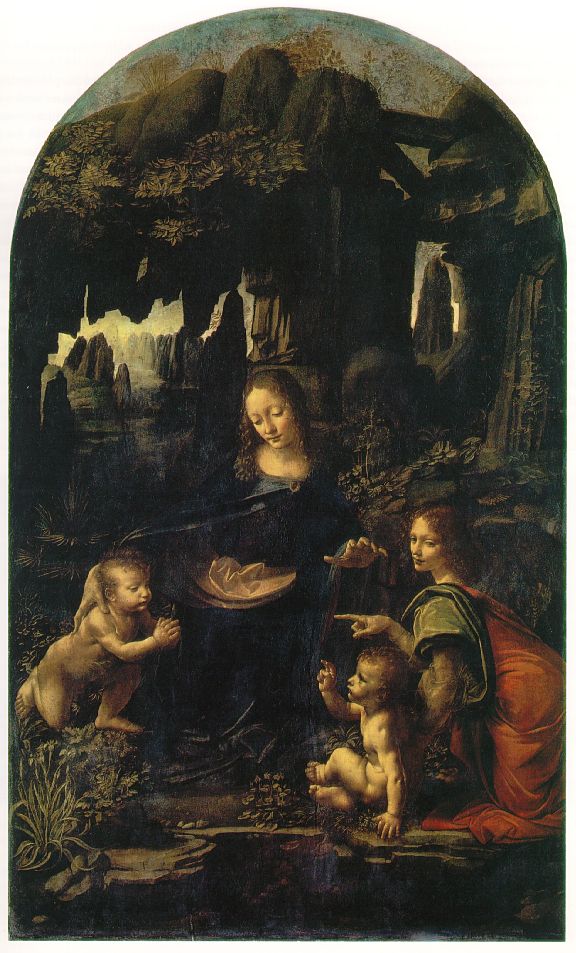
Lady with an Ermine
1483-1490
Oil on wood
53.4 x 39.3 cm (21 x 15 1/2 in.)
Czartoryski Museum, Cracow
